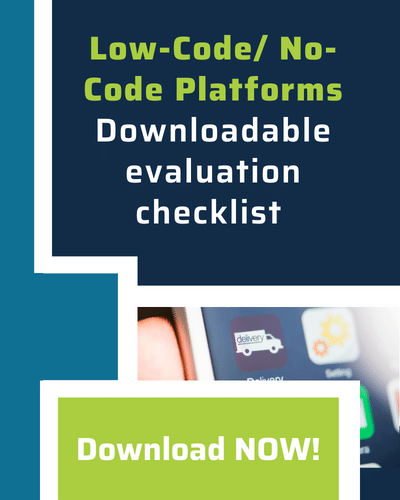SAP middleware like BTP, PI/PO, and custom APIs is meant to help systems talk to each other. But often, it just slows you down. If your goal is to improve SAP-connected workflows or deploy mobile apps fast, middleware might be doing more harm than good.
Here’s how SAP middleware adds friction—and how native SAP integration can solve it.
What Is SAP Middleware and Why Is It Used?
SAP middleware sits between your core SAP system and the outside world. It handles integration tasks like routing, API management, and protocol translation. Common examples include:
- SAP BTP Integration Suite
- SAP PI/PO
- SAP Gateway (for OData services)
- Third-party iPaaS tools like Boomi, MuleSoft, and SnapLogic
They enable communication, but they also bring:
- Complex setup and maintenance
- Licensing costs
- Delays caused by integration layers
- Dependencies on middleware and API teams
These are fine for large, multi-platform integrations—but not ideal for fast-moving SAP projects.
How Middleware Slows SAP Projects Down
Using middleware to connect mobile apps or web portals to SAP can slow you down in several ways:
- Extra steps – You need to expose business logic via OData or custom APIs.
- Extra teams – Integration teams must build, test, and maintain those layers.
- Extra environments – Middleware often requires dev, QA, and prod setup.
- Extra risk – More moving parts mean more places where things can break.
Middleware becomes a project in itself—before you’ve even built your actual application.
The Hidden Costs of SAP Middleware
It’s not just time. Middleware introduces hidden costs:
- Licensing – BTP and third-party tools charge by connection, volume, or user.
- Staffing – You need specialists to configure, monitor, and troubleshoot integrations.
- Upgrades – SAP version changes can break middleware connections or force rework.
This means your SAP project spends more time on infrastructure than outcomes.
You Don’t Always Need Middleware for SAP Integration
Here’s the part most teams overlook: if you just need to run SAP transactions from another interface—like a mobile device, tablet, or web portal—you may not need middleware at all.
Common use cases like these don’t require PI/PO or BTP:
- Submit a goods issue from a mobile device
- Update delivery status from a web portal
- Execute a custom SAP transaction (Z-tcode) from an external system
You just need secure, real-time access to SAP. And you can get that directly—without exposing APIs or building OData services.
Native SAP Integration with No Middleware
Pillir enables native integration to SAP ECC and S/4HANA using certified RFC and BAPI connectors. No BTP. No OData. No ABAP rewrites.
What this means for your team:
- Direct access to SAP business logic—custom and standard
- Real-time transaction execution from web and mobile apps
- Support for Z-objects and custom modules
- Secure connectivity without modifying your SAP core
You build what you need. You don’t wait on integration teams. And you don’t pay for tools you don’t need.
SAP Integration Without Middleware: What You Gain
Removing middleware simplifies everything:
Without Middleware |
With Middleware |
| Direct RFC/BAPI execution | Indirect API/OData exposure |
| No extra licensing | BTP or PI/PO fees |
| 8–12 week app deployment | 6–12-month integration projects |
| Lower maintenance | Ongoing coordination between teams |
You reduce cost, accelerate delivery, and gain flexibility.
When Middleware Makes Sense—and When It Doesn’t
Middleware has a place in SAP ecosystems. For example, it’s helpful when:
- You need to connect SAP with multiple third-party systems
- You manage high-volume data integration across platforms
- You require robust message queuing or transformation logic
But for common field operations, warehouse transactions, or simple user interfaces? Middleware is overkill.
Final Word: Build Faster with Native SAP Access
Middleware isn’t always the fastest or most efficient path. If you want to create SAP mobile apps, digitize paper-based processes, or extend SAP logic to the edge—you don’t have to build around middleware.
You can connect directly. And you can do it securely, using native SAP capabilities.
That’s how Pillir helps teams move faster and spend less—by removing what’s not needed.




 Back
Back/Logo%20-%20black%20text%20blue%20pillar%20(large)-1.jpg)

